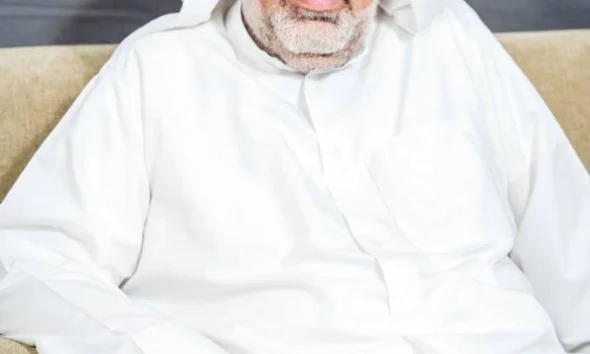Home » Interviews » Yasmin Hayat a Syrian celebrity who gathered Syrian art with Western designs
Interviews
Yasmin Hayat a Syrian celebrity who gathered Syrian art with Western designs
Published
3 years agoon
By
Huda Az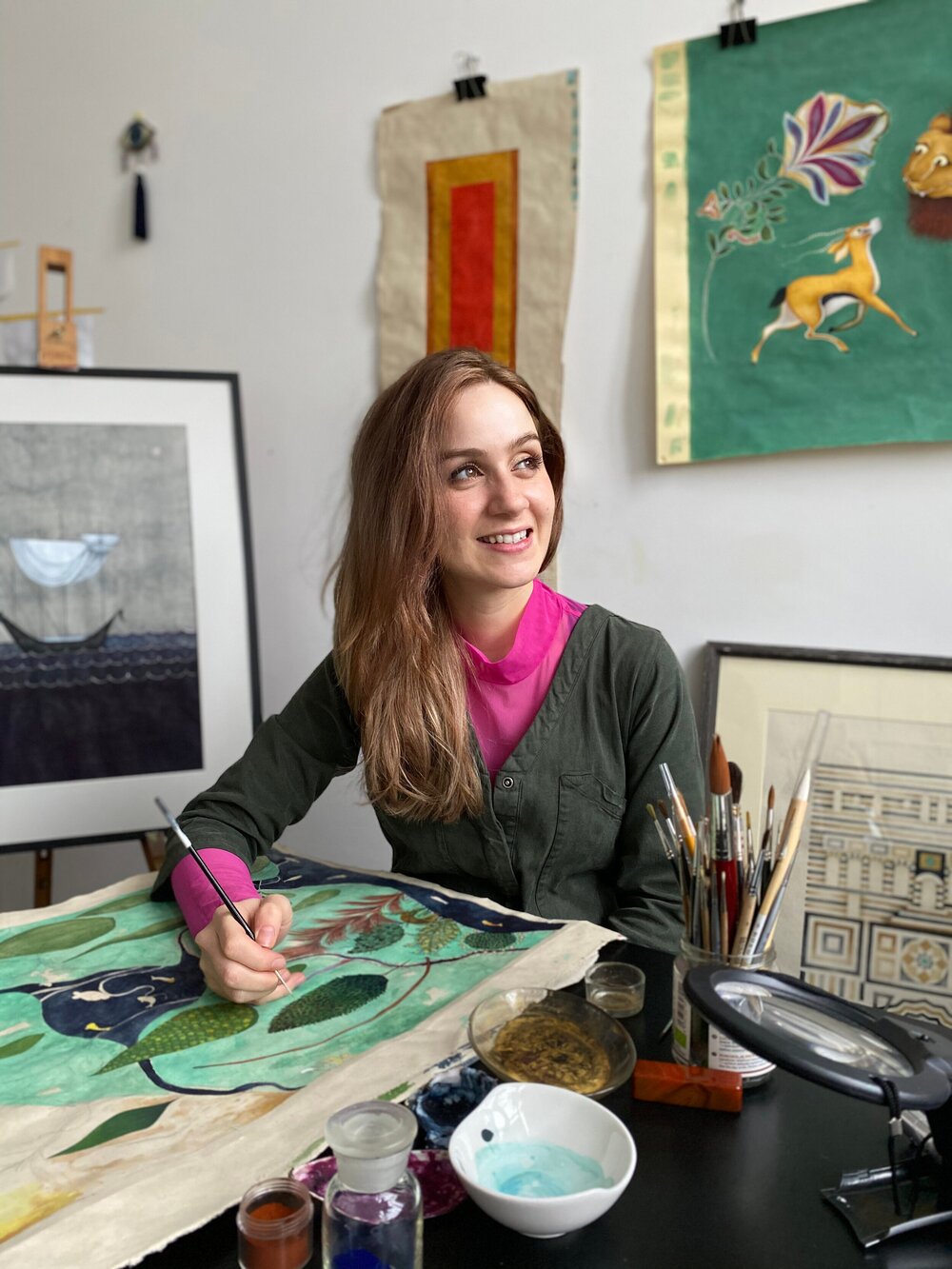
Yasmin Hayat a Syrian celebrity who graduated in painting from Central Saint Martins (University of Arts London) before specialising and in the arts of the Middle East at the Prince’s Foundation School of Traditional Arts. Inspired by her Syrian heritage, Yasmin has developed a language of painting which is derived from an old Arabic style and incorporates contemporary Western and Indo-Persian techniques. Her work is a considered blend of Eastern and Western methodology, bringing together two distinct traditions and uniting them in order to create paintings which speak to the imagination. In 2018, Yasmin was awarded the Kairos prize by His Royal Highness, Prince Charles and Professor Keith Critchlow for her paintings which preserve and celebrate traditional art practices and techniques.
1. Who is Yasmin Hayat ? And how did originality find its way to your paintings?
Yasmin Hayat is a British-Syrian artist who lives and works in London. After studying
contemporary fine art at university, Yasmin completed a Masters in Traditional Arts from Princes Foundation School of Traditional Arts.
Her original style is a result of her life-long devotion to painting and has been shaped by her experiences in both institutes.
The resulting paintings are a considered blend of Eastern and Western methodology, united together in order to create paintings which speak to the imagination.
2. Why did you develop a language of painting that is derived from an old Arabic
style?
During her undergraduate painting degree at Central Saint Martins, Yasmin began
making art informed by her Syrian heritage. Inspired by the artistic and architectural
language in Damascus, Yasmin began studying geometry and Manuscript painting under several master craftspeople. As Yasmin’s artwork is inspired by her Syrian culture, it became increasingly apparent and important for Yasmin to use techniques and a stylisation that is inherent to the region.
It did not make sense to paint about Syria using a European art style.
As Yasmin’s artistic knowledge matured, she developed her own
language of painting that is a marriage of the old Arabic style of painting, reenvisioned in a contemporary context.
3. What distinguishes Indo-Persian Techniques from others? And why did you adopt it
in developing your language of painting?
Yasmin’s paintings are inspired by her Syrian heritage. Part of this interest led Yasmin to researching and understanding techniques and materials native to the region. Miniature painting is a style which existed in Syria, before being replaced with contemporary Western techniques that we know of today.
Indian, Ottoman and Persian Miniature
paintings are perhaps the most well-known and recognisable of the Miniature styles, but
there were also Miniature artists in places such as Iraq, Syria and Egypt. Very few master Miniaturists are alive today, and with the exception of the School of Traditional Arts, there
are no modern institutes that teach the style. During her Masters, Yasmin learnt both Indian and Persian Miniature painting from Master artists and studied imagery from Arabic manuscripts.
Yasmin studied as many techniques as she could because there are some nuanced differences between the schools. It is worth noting that there was a lot of overlap in technique as talented Miniature artists from the various counties moved from one royal court to another, they took with them their styles and knowledge and shared it with the other court artists, hence why there are a lot of similarities and overlap in the Miniature style.
The Indo-Persian Miniature style is identified through its stylisation of forms, symbolism and use of materials (natural pigments on paper or fabric). This is compared to contemporary painting done in oil, watercolour or acrylic and without any guidelines to inform style or characterisation.
I would say contemporary art is guided by the individual and is without rules, Miniature art has structure, symbolism and rules.
4. How do you create pigments, and what do you rely on in this innovative process?
Oh this is a very long, personalised and nuanced process depending on what you are making the pigment from and how you like your paint to be! It’d be impossible to describe in depth in one short paragraph. I studied Alchemy under professor David Cranswick and still research recipes to this day!
I wouldn’t describe the technique as innovative, instead I would use words like
“instinctive, natural, intuitive” Like everything once was, pigments were made from natural materials, it’s only relatively recently that pigments are manufactured in
laboratories from a concoction of cheap and synthetic ingredients.
These natural ingredients include materials like semi-precious stones, plants, earths and
some pigments even came from the animal kingdom. Depending on the source, the
pigment would be extracted, cleaned and refined, before being combined with a binding material such as gum, oil or glue. Once combined it’s ready to use as a paint.
When making paint from pigments, I rely on a very good and heavy brass pestle and
mortar, high quality ingredients, many glass jars and many, many small saucers!
It’s also important to have a good solid piece of smooth glass or granite as a surface to combine your pigment and binder on.
5. In what way do you think your paintings reflect your Oriental Syrian identity?
I’m inspired by the colours, styles, smells, songs, stories and folklore of the region. Some of my works are directly representative of Syria, my painting: For the Love of Damascus is an example. Other paintings may appear to have no apparent relation to the region.
These are the works that are more inspired by literature or music from Syria. The
Miniature style tends to be the uniting factor in these more nuanced pieces
6. How important is being in London, which is famous for its long and proud history of art?
Sadly there have been a lot of funding cuts to further arts education (college and university) which has negatively impacted many London institutes. Furthermore, studio rent is increasingly expensive which is making London prohibitive for many artists
What London excels in is it’s community and external support for artists. No matter your preferred style you will find it here in the UK. There are ample museums, galleries and art events, scholarships and funding bodies. Dealers and collectors reside here, curators
and visionaries. There are talks, walks and fairs, for every kind of art. It is for that reason that London is a place of inspiration and excitement, I have unlimited access to resources and a community of fellow artists, including Miniature painters who I can
physically interact with. That really is special and I don’t believe this diverse community can be found elsewhere. This is what makes London important and my preferred home.
7. What does the Prince’s Foundation School of Traditional Arts mean to you?
The School of Traditional Arts allowed me to connect with other artists and craftspeople
who specialise in this incredibly niche field. There is no other institute (that I am aware of) that teaches this course content. There is a deep respect for these art forms at the
School of Traditional Arts, along with a desire to keep them alive.
I am where I am, because of the MA programme. Because of the teachers I learnt under and the friends I made. I learnt and grew more as an artist in the two years of the MA programme compared to my four year undergraduate degree.
8. Has the UK helped make your professional life easier and thus, developed your skills?
I was very lucky in that I had a lot of support from a young age. Art is not considered a stable or profitable career (and often it is not, not even in the Uk) but this perception means that there is little push or support to do the subject. Additionally, this subject
encourages a kind of “out of the box” free, lateral thinking which is opposite to how a lot of the education is taught (There is an emphasis on book smarts instead) ,
My parents really supported my creativity as a child. Additionally, my school recognised that this was an area I did well in, so my tutors pushed me to do extra studies, extra
work, extra courses and extra exams all of which gave me the skills and knowledge and got me into a good university.
The UK helped in that it values the subject enough to encourage a young student to
excel in it. It helped once again when it came to the community. It’s not enough to be good at art, you have to network. London is a hub brimming with the right people, so
being here amongst them and engaging has really benefited me professionally
There is also the School of Traditional Arts which is based in London and is where I
specialised. Although the institute has sister sites located around the world, the MA
programme is London based.
9. Tell us about your contribution to leading art workshops and offering courses on painting around the world?
I teach both geometry and painting, both Miniature and drawing to people of all
ages. I have been teaching art for many years and have been told I am a good
teacher. My connection with the School of Traditional Arts led me to doing
workshops in countries such as Abu Dhabi, and allowed institutes such as the
British Museum and the Watts gallery to find and work with me.
During the Pandemic I was no longer able to do these in-person workshops. Adam Williamson from Art of Islamic Pattern invited me to collaborate on an online
Miniature workshop which was a great success. Following this workshop I launched
a series of online classes in Miniature painting and worked with Institutes such as
the Victoria and Albert Museum, The School of Traditional Arts, The Amateo
foundation in Belgium and with City Lions in Westminster.
10.Tell us about your outstanding contribution with your paintings to the Eden Garden Exhibition at the Agha Khan Center.
At the start of the first UK coronavirus lockdown, Esen Kaya, the curator from the
Aga Khan Centre approached me after learning of my ceramic work ‘Flowers of
Damascus’ she commissioned four similar style ceramic plates, each inspired by
fruits and flowers mentioned in the holy book.
Iznik was the prominent style of ceramics in the Syrian region and I had done a
number of Iznik courses whilst I was studying at the School of Traditional Arts. So
using this knowledge, I paired referenced flowers and fruits, before drawing them
and creating harmonious designs based on the Iznik style.
The results are the four
plates that are on display at the Aga Khan Gallery.
The idea was to create something celebratory and beautiful after a year being
locked indoors.
Something inspired by the natural world, which we had been
separated from and sorely missed. Something to stimulate the eye and find beauty in.
Whilst painting and designing the plates, I was reminded of my aunt’s courtyard
house in Damascus. I remembered the central foundation, the plants and colours
and I painted my memory of it. It seemed fitting and was a direct response to the plates I had made.
I had always visited my aunt’s home in the cool evening, a refuge from the heat of the Syrian sun, so my painting was done on dark paper – to reflect the night sky.
It was the first place I wanted to see and find sanctuary in once we’d be able to. It felt fitting to be placed in an exhibition about heavenly spaces.
11.Does engaging with many painting artists in one gallery help develop your language of painting and enhance your creative experience?
Each artist brings their own unique vision, expertise and contribution with them. It can be very exciting to exhibit alongside an artist or artists that you admire.
The right pairing can result in an excitable exchange of ideas and visions, which will inevitably alter thedirection a body of work may take.
12.How important is it to cooperate with global artists and integrate the spirit of
global civilization?
I mentioned earlier that historically, Miniature artists would travel or be sent to different royal courts.
In those environments they met and worked with other artists from different backgrounds. It is through these exchanges that we find things like Chinese clouds becoming a common motif in Persian Miniature painting, or how paper travelled from the East to the West.
How ultramarine blue became popular in Europe and so forth. I don’t believe in borders, or in the restriction of movement, or anything that stifles the human experience.
A global exchange of ideas and collaboration is what drives the movement
forward, keeps it alive, fresh and innovative. It teaches us new ways and powers of Thinking, of seeing. Global exchange is a powerful and profoundly human tool that should be utilised.
13.What are the most prominent points of difference and similarity between western art and Arabic art?
It’s important to detangle modern Arab art with traditional Islamic art, as modern Arab art is in bed with the Western style (there is nothing wrong with this.) Islamic art is what is commonly thought of as being “Arab” art and encompasses any techniques and practises from a large range of countries that were once under the Islamic empire. The most commonly considered Arab arts are things like geometry, biomorph, calligraphy and Miniature painting (although Miniature is also strongly connected to the Hindu and yogic
faith).
Many of these techniques (geometry, Manuscript painting etc) were depopulised
many years ago and with the exception of a few remote, private teachers, you will no
longer find them taught in the Arab world. Today, Arab art is whatever an Arab artist
makes…
If we look at modern Arab art, there really is little difference to Western art.
Traditional art from the region, specifically geometry, biomorph, calligraphy and Miniature painting is rife with symbolism, purpose and respect (to the material, heart and mind).
The purpose of traditional Miniature painting for example, is not to represent the subject you are painting in a realistic manner, but to take you on a journey along with its spirit.
The spirit of the subject. I believe that modern Miniaturists, that is – those of us who practice the art form today, consider and respect this boundary when making new works.
Contemporary Western art on the other hand has diverged from what was once a
symbolic meaning and is now an umbrella term for many different styles. Western art can have many purposes and many meanings but each piece is a result of an artist’s unique interest and perspective. There is no universal, underlying symbolism and no unifying
language, Western art is as personal as a person’s choice of clothing.
14. How do you integrate Arabic and western art into your paintings?
I studied art from a very young age, I feel as If the language is deeply ingrained in my bones. I grew up in the Western world. I studied under Western teachers and I am
surrounded by modern, Western art.
I even collect some of it. I also studied Islamic arts
and studied under master craftspeople, I surrounded myself with, was visually stimulated by and collected Islamic arts from the likes of Syria, Egypt and Turkey. I researched thousands of images from both the Arab and Western worlds.
I cannot (nor do I want) to simply shake off the journey that has got me to where I am today.
I am a British Syrian, the West is as much part of me as the East. With every new work, I start by exploring existing Miniatures, I then respond and it’s in this response that all my learning and experience comes out as a true amalgamation of East meets West. It’s not
a process that I think about intentionally, rather it happens organically.
15.Personally speaking, what does the Kairos prize you were awarded in 2018 mean to you?
The Kairos prize is awarded on behalf of Professor Keith Critchlow, a man who dedicated his life to the research and understanding of traditional arts. He founded the School of Traditional Arts and was a true visionary.
I had the honour of speaking with him, to have his approval of my work was better than passing my programme with a first.
He was a master in his field, it was a validation and the only seal of approval that I needed.
16.Your paintings can be found as holdings in many countries of the world. What does that mean to you?
It’s incredibly humbling. . I think about those works often, I think of the people who
bought them. I wonder how often they are gazed at. What they have witnessed, what
imaginations they have sparked.
I hope they continue to tell stories, perhaps a new story every time they are gazed upon.
17.Is the Arab woman already able to express herself, first, in society and through art?
Minority, especially minority female voices are underrepresented both in the Arab world as well as in the west. It’s getting better but it remains a slow uptake.
The art world was once reserved for men and there are still hurdles in our way.
That being said, Arab women are some of the most self-assured and confident I have
met, there are some incredibly exciting, young female Arab artists on the scene and it’s exciting to see.
I still think there’s a long way to go before we have the same representation as our male or Western counterparts.
18.You paint delicately and creatively. How does Yasmin paint her future?
It’s impossible to say, if you told Yasmin ten years ago she’d be painting the way she
does today, she’d never have believed you. The future is to be revealed.
19.You are a true example of inspiration and innovation for many women. What advice do you give them?
Thank you.
Firstly, believe in yourself and if you are truly passionate in this field, don’t give up. It
is a tough industry and it will challenge you. Just like a writer can experience block,
or a musician have a bad album; you will have good periods and bad.
It’s normal,
don’t panic, you will thrive once again.
Don’t compare yourself to others, we each have our own unique journey and we
each peak at different times.
There is enough room for us all, you just need resilience and patience.
You should be doing this because it is your passion, not because someone else has what you want.
That is not passion and not worth
pursuing.
Define what success means to you, and remind yourself of that definition frequently.
Don’t let your ego get in the way. If you think you have learnt all there is to know and perfected your form then you have set yourself up for failure.
Learning and developing is a lifelong pursuit. Don’t get too comfortable. With comfort comes stagnation.
Know your worth. Ask for what you want. Never settle for less, it will never be never
be worth it.
Finally, be unapologetic, in who you are and what you do. When I first started my
tutors tried to discourage me, I was told I was doing nothing new and that I was not
“pushing the envelope,” what they failed to realise was that I was creating the
foundations to get to where I am now. I am still laying those foundations. Success
doesn’t come overnight, question it if it does. Always dream bigger and then better.
Everyone will always have an opinion, life would be boring if it is always the opinion
you wish to hear
You may like
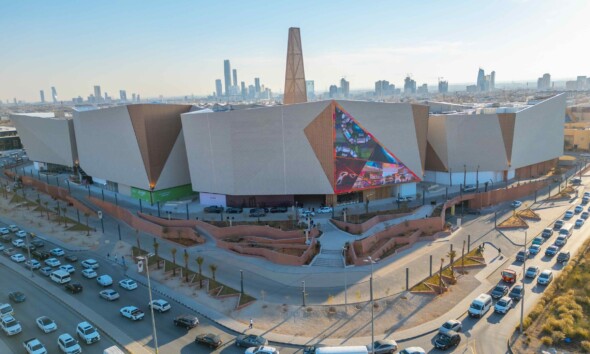
Solitaire Riyadh: A Tour of an Elegance & Luxuriance World
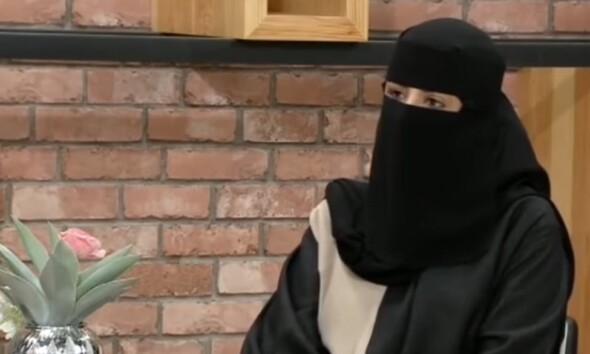
Rawan Al-Hamidi: Balanced Opinion Pieces Demonstrate the Journalist’s Objectivity
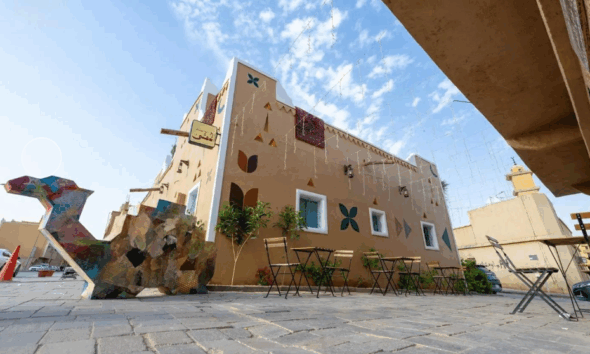
Diriyah’s Popular Cafés: Art & Creativity Collide with Genuine Heritage
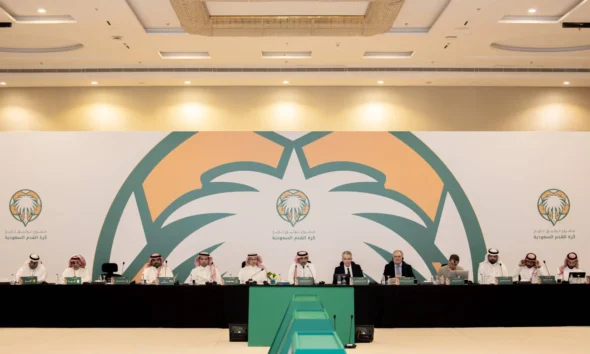
Saudi Football Documentation Project: Extensive Disputation
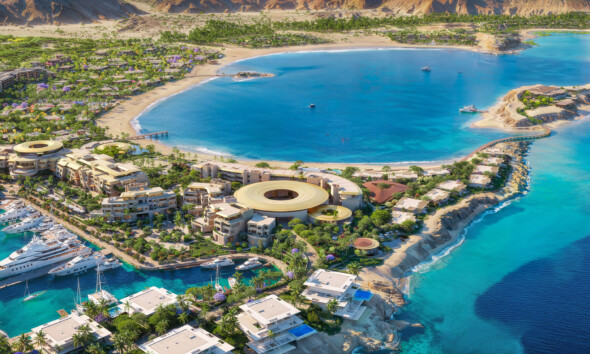
Nammos Resort AMAALA: KSA’s New Address for International Luxury Hospitality
